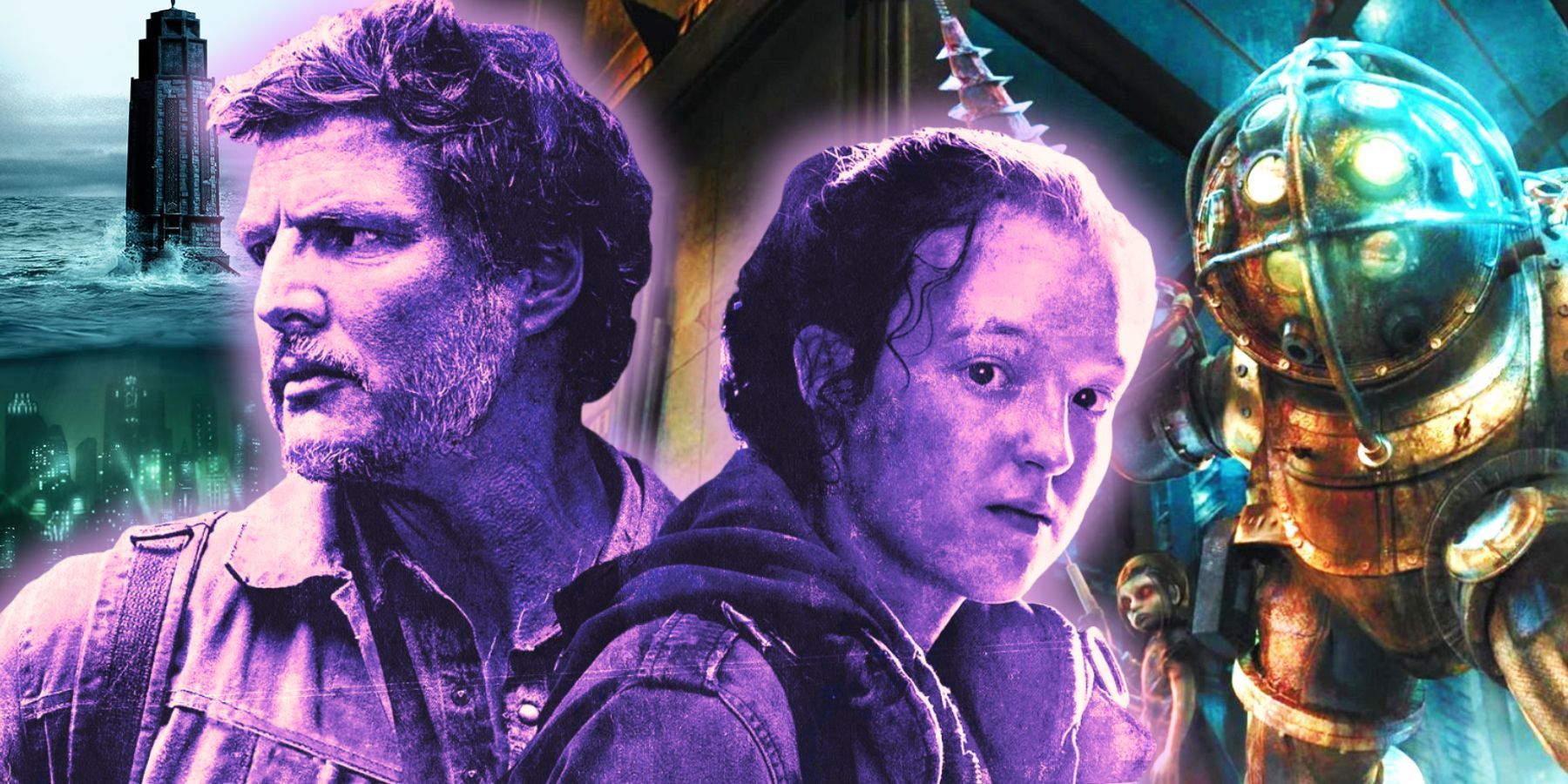Netflix’s BioShock movie needs to replicate a key aspect of HBO’s The Last of Us season 1 in order to be an equally successful video game adaptation.

Summary
- The BioShock movie should replicate HBO’s The Last of Us in order to succeed as a video game adaptation, staying faithful to the source material while making a few tweaks that enhance the story and world-building.
- The Last of Us season 1 leveraged television’s unique strengths by taking its time to unfold and expanding upon characters’ backstories and roles, which benefited the series and added to the franchise’s world-building.
- The BioShock movie should adopt a character-driven approach like The Last of Us, exploring tangential stories and pre-collapse Rapture to add depth to the world-building and flesh out the movie’s characters.
Netflix’s upcoming BioShock movie needs to replicate a key aspect of HBO’s much-loved The Last of Us season 1 in order to succeed as a video game adaptation. Based on 2K Boston’s (later, Irrational Games) 2007 first-person-shooter-meets-RPG of the same name, the BioShock movie is set to take viewers to the underwater, 1940s-built city of Rapture — a supposed utopia for the elite built by individualist business magnate Andrew Ryan. The community for wealthy artists and scientists sits outside the U.S. government’s control, and stands apart from society’s so-called “petty morals.” Ryan’s isolationist model worked for a time.
Eventually, Rapture’s wealth disparities grew amongst BioShock‘s characters, leading to conflict. Astute conman Frank Fontaine rallied Rapture’s disenfranchised working class against Ryan, all while creating a company dedicated to researching plasmids — highly addictive mutagenic serums derived from sea slugs that grant users super-human abilities. After Fontaine’s death, the downtrodden worker Atlas rose up, continuing the violent revolution against Ryan. This culminated in a plasmid-riddled conflict on New Year’s Eve 1958, leaving Rapture a dystopia by the time the player character, Jack, arrives. Needless to say, BioShock‘s story is one of its best assets — but translating it well poses a huge challenge.
HBO’s The Last Of Us Remained Faithful While Adding To The Story
Video game adaptations have an uneven reputation, to say the least. After all, translating an interactive medium into a more passive one has its inherent pitfalls. Often, filmmakers and showrunners what to change a game’s formula too much, leading to disappointed fans and a less-than-satisfying film or TV series. Some video game adaptations have beaten the odds, including HBO’s take on The Last of Us and its characters. A story-driven game, The Last of Us is set in a post-apocalyptic version of the U.S. — one that’s been decimated by the Cordyceps brain infection.
Although very different from the BioShock movie content-wise, HBO’s The Last of Us has a lot to teach the upcoming Netflix film. Co-creators Craig Mazin and Neil Druckmann, who also penned the video games, stayed faithful to the source material, but weren’t afraid to make a few tweaks. The changes that were made were to the benefit of the series, insofar as they leveraged television’s unique strengths. For example, The Last of Us season 1 takes its time, unfolding in slow-burn fashion across nine episodes. Additionally, it sticks to the game’s canon while expanding upon characters’ backstories and roles, which only adds to the franchise’s world-building.
The BioShock Movie Needs To Copy TLOU’s Character-Driven Approach

One of Last of Us season 1’s best episodes was “Long, Long Time,” the third chapter in the series. Instead of sticking close to Joel (Pedro Pascal) and Ellie (Bella Ramsey), episode 3 tells a fresh story about Bill (Nick Offerman) and Frank (Murray Bartlett). In the game, Bill and Frank are side characters (Frank’s dead by the time the player reaches Bill), but the show wisely tells a tangential story about the two characters. Not only is it a beautiful, standalone love story set against the show’s post-apocalyptic backdrop, but zeroing in on Bill and Frank’s decades together does a ton of compelling world-building too.

Netflix’s Bioshock Movie: 10 Things We Want To See
Netflix is tackling the movie adaptation of Bioshock, and they have the opportunity to show off some key elements of what made the game successful.
A lot of The Last of Us‘ intrigue stems from its world-building. In particular, how people reacted to (and changed in) the immediate wake of the Cordyceps outbreak is a captivating thread that’s not fully covered in the games. Similarly, much of what’s gripping about BioShock‘s universe occurs pre-gameplay, leaving the player to piece together the Andrew Ryan, Frank Fontaine, Atlas, and plasmid story lines. Setting episodes or even vignettes in pre-collapse Rapture — be it the fateful New Year’s Eve or a time before then — would add to the vibrancy of the movie’s world, and help flesh out BioShock‘s characters.
BioShock’s Director Has Confirmed New “Twists” While Being True To The Canon

Recently, the Netflix film’s director, Francis Lawrence, spoke about a crucial BioShock movie decision regarding the project’s faithfulness, confirming that the creative team won’t break canon. A game-accurate BioShock movie is surely a relief to the video game’s fans; seeing Rapture fully realized in live-action is an exciting prospect, but it comes with serious challenges too. That said, adding in a few twists — that is, deepening the existing content — while remaining largely faithful is a tried-and-true formula. It worked well for The Last of Us and, despite the games’ differences, it would seemingly suit an adaptation of the equally story-driven BioShock as well.





